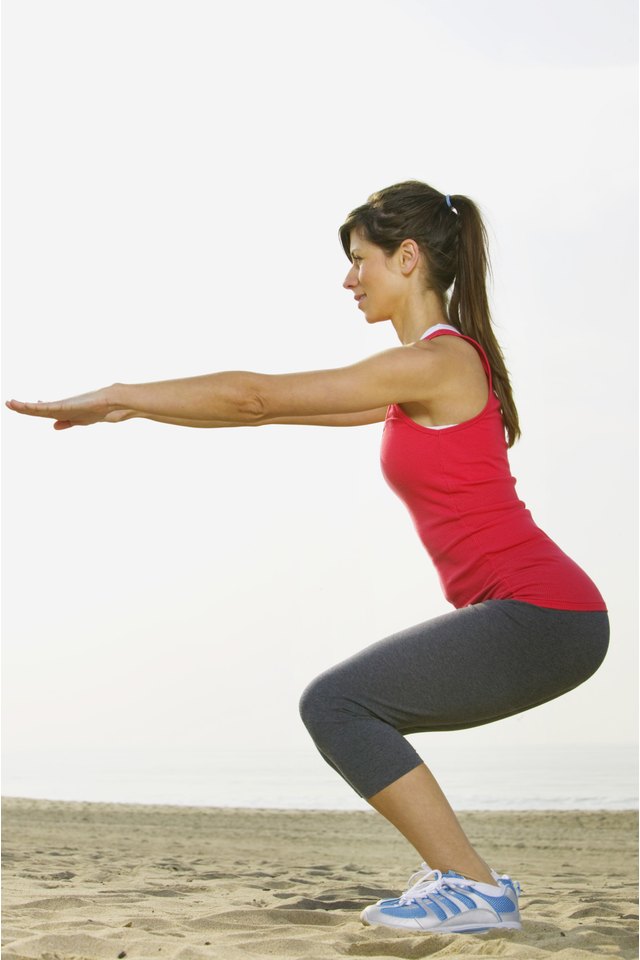Examples of Bilateral Exercises

Strength exercises fall into two categories: bilateral and unilateral. Bilateral movements work both sides of the body together; unilateral movements work one side of the body at a time. Training with bilateral exercises has benefits and drawbacks, so you should include both types of movements in your workout routine.
Bilateral Exercises
Bilateral exercises include any movement in which you produce force using both sides of the body simultaneously. Squats and deadlifts are examples of lower body bilateral exercises. Lunges and step-ups are unilateral movements, since you only work one leg at a time. Upper body bilateral movements include the barbell chest press, the barbell biceps curl and the two-arm dumbbell overhead press. A one-arm dumbbell biceps curl and a one-arm cable press are unilateral upper body exercises.
Misconceptions
It is a misconception that exercises using a barbell are bilateral movements and exercises using dumbbells are unilateral movements. True unilateral movements involve using only one side of the body at a time. If you perform a dumbbell curl or a dumbbell chest press and you move both arms together, you are doing a bilateral movement. To make it a unilateral exercise, complete all the repetitions for one arm and then complete all the repetitions for the other arm.
Benefits
Bilateral exercises do not require as much coordination and balance as unilateral movements, making them ideal for beginner exercises. Performing a lunge requires more balance and coordination than performing a squat. Cut your workout time in half by performing bilateral exercises rather than unilateral exercises. Do 10 repetitions of a barbell curl to complete one set. If you perform a dumbbell unilateral curl, you double your workout time because you have to do 10 reps on the left arm, then 10 reps on the right arm.
Drawbacks
Bilateral training often exposes a phenomenon called the bilateral deficit -- the total force production of the bilateral lift is less than the sum of the individual limbs. In other words, the amount of weight you can press with both arms together is less than the sum of the amount you can lift with each arm individually. Although the mechanisms responsible for this asymmetry are unknown, a 2010 study published in the "Journal of Science and Medicine in Sport" found that unilateral training reduces the extent of the bilateral deficit. The American College of Sports Medicine recommends using both types of exercises in your training, whether your goal is to increase strength, muscle size or power.
References
- Medicine & Science in Sports & Exercise: Progression Models in Resistance Training for Healthy Adults
- American Council on Exercise: Seated Cable Press
- Journal of Strength and Conditioning Research: The Effects of Short-Term Unilateral and Bilateral Lower-Body Resistance Training on Measures of Strength and Power
- Academia.edu: Reduction of the Bilateral Deficit Following Unilateral Strength Training: A TMS Study
Writer Bio
Based in Austin, Texas, Jolie Johnson has been in the fitness industry for over 12 years and has been writing fitness-related articles since 2008 for various websites. She received her Bachelor of Arts in English and philosophy from the University of Illinois.
